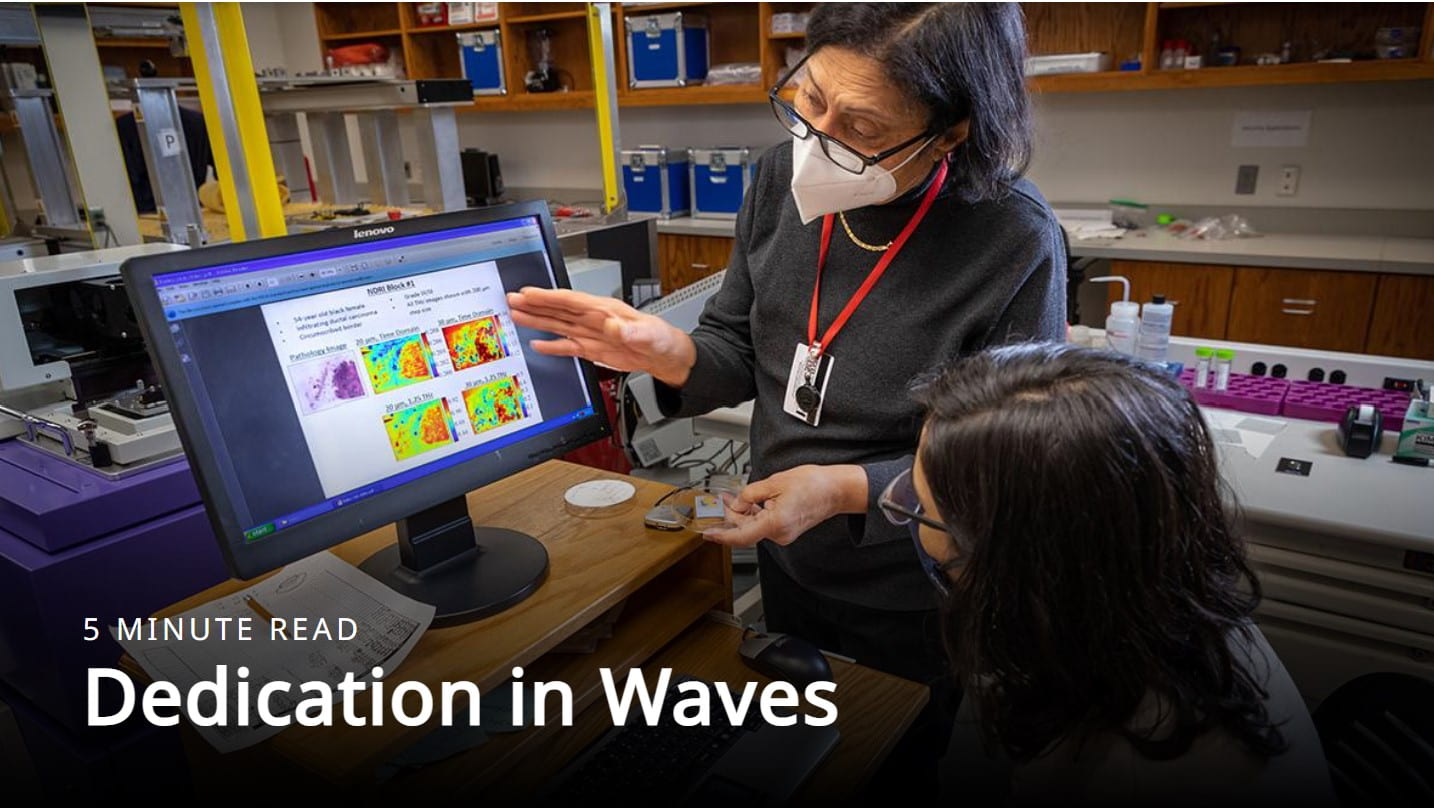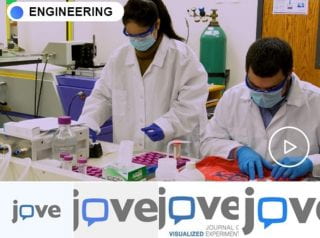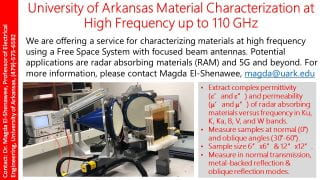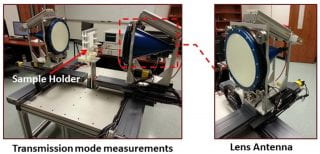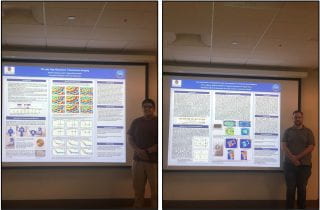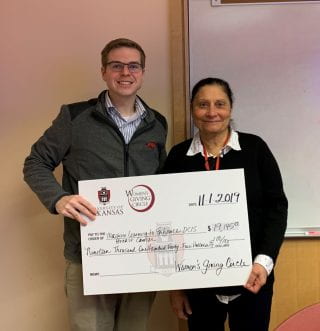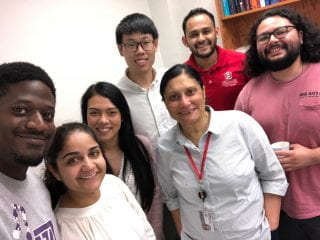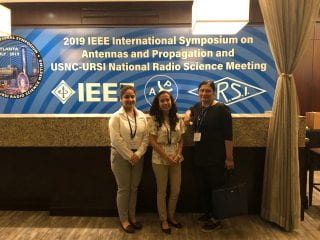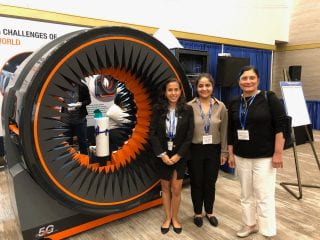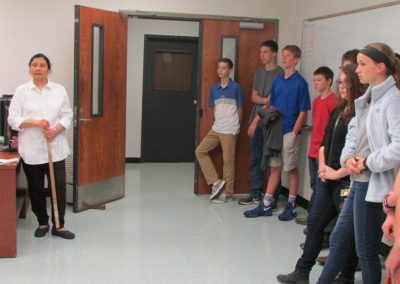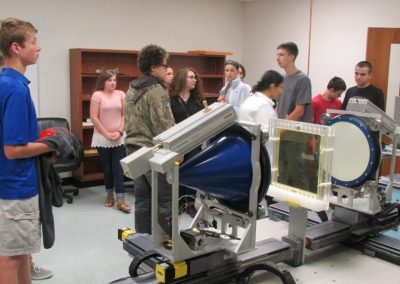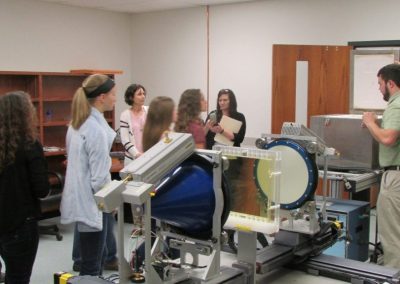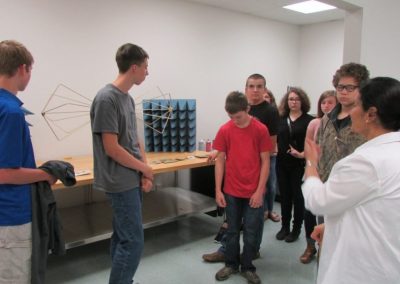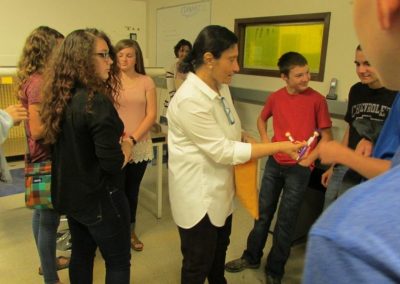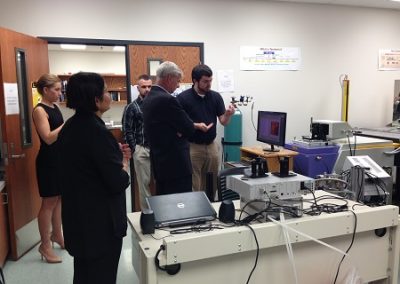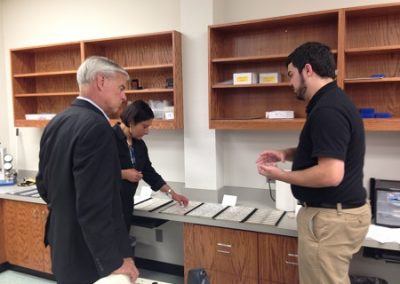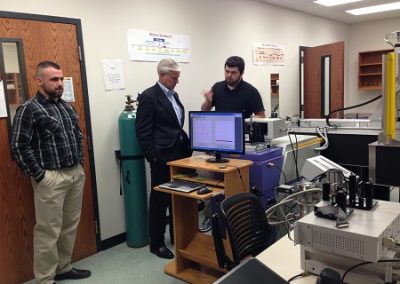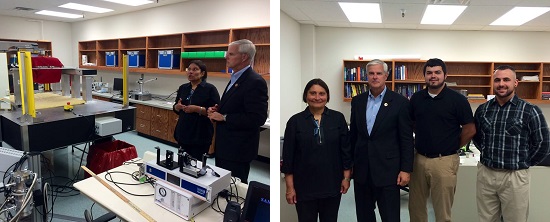Open-Bench TeraAlign System for Terahertz Photoconductive Antennas (PCAs) Signal Generation Measurements
Cancer Research in Terahertz Imaging and Spectroscopy Lab
Funded by NIH/NCI, we published our developed protocol of terahertz imaging of breast tumors in the Journal of Visualized Experiments (Jove), titled “Terahertz Imaging and Characterization Protocol for Freshly Excised Breast Cancer Tumors”, coauthored by Nagma Vohra, Tyler Bowman, Keith Bailey, and Magda El-Shenawee. The video will walk you step-by-step through the protocol. If interested, login to Jove website or watch the complete video and the paper posted on https://lnkd.in/ep26xD5
Non-Destructive Characterization of Materials Using Free Space System from 5.8 GHz to 110 GHz
Our free-space system offers:
- Non-destructive, contactless testing of dielectric materials and inhomogeneous/ anisotropic/ metamaterial samples
- Characterization of complex permittivity and permeability
- Supports full range of frequencies between 5.8 GHz-110 GHz
- Lenses focus microwaves to 1 wavelength (3dB beamwidth)
- Measurements at normal (0deg) and oblique (35deg-55deg) incidence
- Reflection and transmission measurements supported
- Co-polarized and cross-polarized configurations possible
- Samples sizes from 6”x6” up to 12”x12” can be tested
- Nine servo motors deliver accurate positioning (X, Y, Z, θ, Φ)
For more information contact Dr. Magda El-Shenawee (magda@uark.edu)
NSF Terahertz Summer REU Supplement Program, 2021
On July 28th, 2021, Roberto Quezada (left) and Anthony Malloy (right) presented their research work in a poster presentation organized by the MicroEP Summer REU Program. Roberto and Anthony joined Dr. El-Shenawee’s lab for the Summer 2021 REU Program funded through NSF grant, titled, “Efficient THz Emission Using Thin Black Phosphorus Photoconductive Absorber and Loss-free Dielectric Light Trapping”, (Award no. 1948255). Roberto’s research work was focused on the THz-jets high-resolution transmission imaging, and Anthony’s work was focused on the characterization of integrated circuit interconnects via terahertz band radiations.
IEEE Texas Symposium on Wireless & Microwave Circuits and Systems Student Research Competition
 For more details go to the given link: Student Research Competition
For more details go to the given link: Student Research Competition
Women Giving Circle Award at the University of Arkansas
We are grateful to the Women Giving Circle (WGC), a philanthropy organization at the University of Arkansas for funding us to conduct research on ductal carcinoma in situ (DCIS). This type of breast cancer represents one of the most controversial diagnosis. Some breast physicians would consider DCIS non-invasive and needs no further treatment, while others consider it invasive and needs aggressive treatment. Recent research suggests that ~20% of breast cancers diagnosed in the United States are DCIS. Of these diagnoses, there is approximately a 10-24% risk of progression to invasive breast cancer within 10 years. The photo shows Dr. Magda El-Shenawee, Professor in Department of Electrical Engineering and Dr. Alexander H. Nelson, Assistant Professor in the Department of Computer Science and Computer Engineering at the University of Arkansas.
Terahertz Imaging and Spectroscopy Lab Group
Dr. Magda El-Shenawee, Nagma Vohra, Igliana Castillo Hernandez, Jose Santos Batista, Luis R. Rodriguez-Aguilar, Tendayi Kamucheka, and Gui Zhijun.
Farewell Lunch to Luis (at the right end). He received Honors College Fellowship to study abroad in Germany.
IEEE APS/URSI 2019, Atlanta, GA, USA
Dr. Magda El-Shenawee, Nagma Vohra, and Tanny Chavez.
Terahertz System for Medical and Biological Imaging and Nanomaterial Characterization Research at the University of Arkansas
The objective of this research is to support non-destructive, non-hazardous and non-invasive imaging applications in engineering, medical, and biological sciences. The approach is based on pulsed terahertz spectroscopy and imaging that has a spectral range from 0.06 to 3 terahertz with high resolution, up to 80 micrometers.
The availability of this terahertz system will lead to contribution to our understanding and utilization of terahertz radiation and imaging techniques in a wide variety of applications. These include investigating breast tumor margins of excised tissue to help reduce cancer recurrence; guiding the fabrication of nano-acoustic imaging materials and devices; studying water content and fungal presence in ecological research, and understanding and monitoring thermal ablation for cancer therapy. The advantage of terahertz light over visible light is that scattering is less allowing imaging deep into an object.
The availability of the terahertz instrument will provide access to unique education, research collaboration and training opportunities for graduate and undergraduate students and postdoctoral researchers. Underrepresented students will be engaged in training opportunities through diversity initiatives at the University of Arkansas.
Terahertz technology provides non-destructive and rapid characterization of coating materials that will impact automobile, aircraft, food, pharmaceutical, semiconductor, and solar photovoltaic energy industry. The capability of terahertz medical imaging will advance oral healthcare and skin and breast cancer detection and treatment. Terahertz technology provides safe imaging and screening that will advance the identification of hidden explosives and personnel screening at airports and mail screening for bio-threats, which will impact national security.
